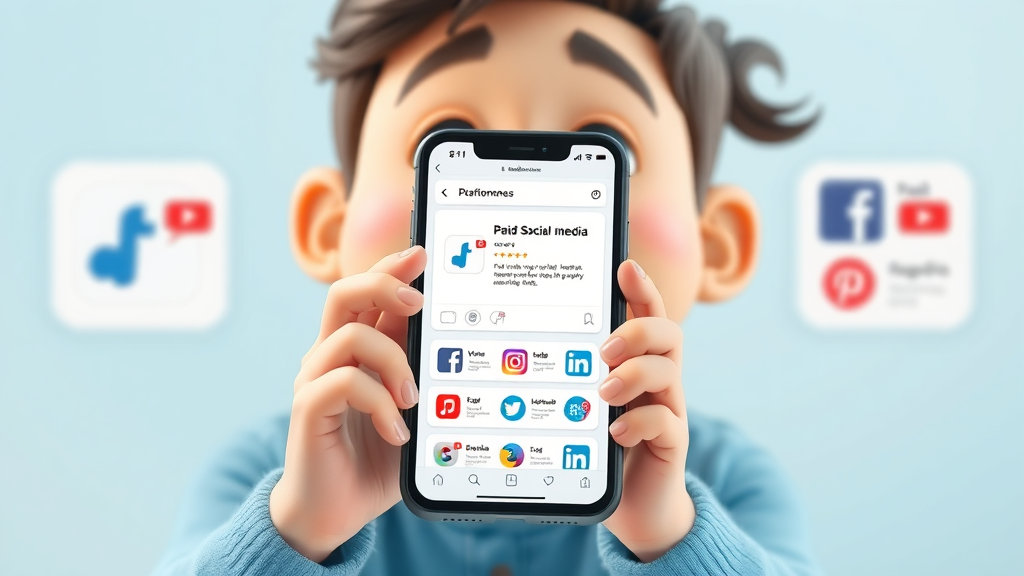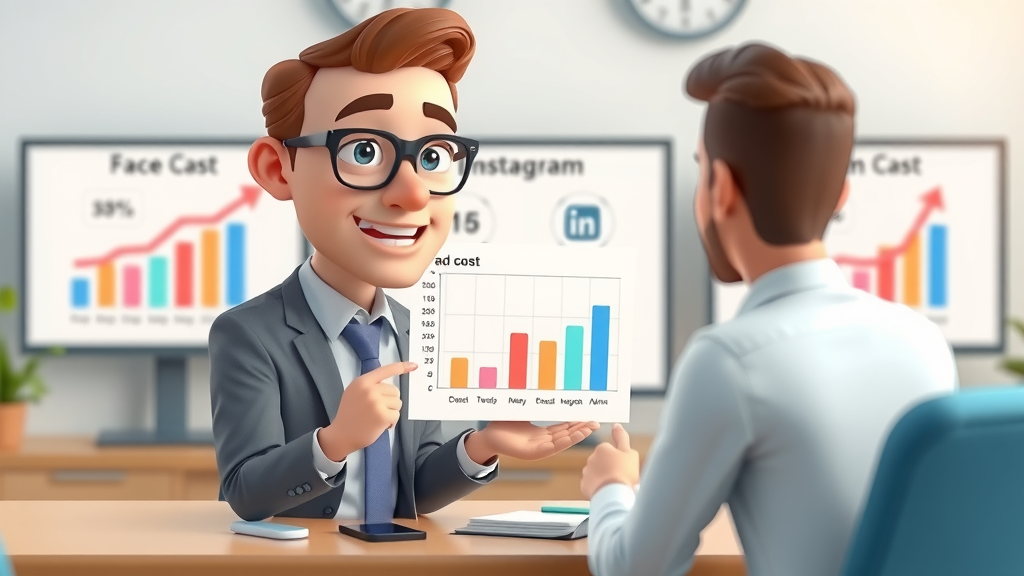Did you know the average social media user sees between 4,000 to 10,000 ads a day—and one wrong move in your paid ad campaign could quietly empty your budget without results? Businesses of every size are pouring money into social media paid ads expecting instant growth, but just one misstep can turn a promising campaign into an expensive lesson. In this in-depth guide, you’ll uncover the hidden risks most advertisers overlook, learn the core principles behind successful paid social media strategies, and walk away with the confidence to safeguard your next media ad investment.
Unveiling the Hidden Risk in Social Media Paid Ads

“Did you know that a misstep in your media ad campaign could drain your budget without delivering results?”
With businesses committing billions to social media paid ads, the stakes have never been higher. Despite their reach and power, these platforms come with serious pitfalls—often hidden beneath glossy dashboards and promising metrics. The risk isn’t just about spending; it’s about the opportunity cost of spending on ineffective media ads while your competitors surge ahead. One of the most looming dangers is misdirected spend, usually stemming from a simple oversight like wrong audience targeting or improper creative selection. These oversights, while common, silently bleed budgets and erode returns, leaving businesses baffled as to why their active users and brand awareness aren’t soaring as anticipated. As this article unpacks, recognizing and avoiding that one critical mistake could spell the difference between scaling your business or writing off another failed campaign.
What You'll Learn About Social Media Paid Ads
- Understanding the fundamentals of social media paid ads
- Identifying common paid social and social media advertising mistakes
- How to optimize your paid social media ad campaigns for ROI
- The impact of media advertising errors on business growth
- Key metrics for measuring paid social success
The Foundations of Social Media Paid Ads
What Are Social Media Paid Ads?

Social media paid ads are promotional messages you pay social media platforms to display directly to your chosen audiences. These ads appear in users’ feeds, stories, or sidebars—designed to look like native content but labeled as sponsored. Whether it’s a Facebook ad highlighting your new product, an Instagram ad showcasing vibrant visual content, or LinkedIn ads nurturing B2B leads, paid ads harness powerful targeting options and analytics, giving brands more control over who sees what, and when. Unlike organic posts relying on followers and shares, paid social gives you a direct line to potential customers, amplifying your reach beyond organic limits. With billions of active users across platforms, ignoring social media ads means leaving reach—and revenue—on the table.
How Paid Social Differs from Organic Social Media Campaigns
Many marketers confuse paid social ad campaigns with organic strategies, but their goals, mechanics, and results are distinct. Organic social content relies on algorithmic visibility—shared posts, likes, and comments drive exposure but are limited by your current network. In contrast, paid social allows businesses to push content straight to a precisely targeted audience, bypassing traditional barriers. This can rapidly boost brand awareness, drive website traffic, and generate leads at a scale unattainable by organic growth alone. However, because you pay for each impression or click, inefficiencies—such as promoting to the wrong target audience or using underperforming ad formats—can rapidly inflate costs. That’s why understanding your options in social media advertising isn’t just smart; it’s essential for survival in a hyper-competitive media channel landscape.
Understanding Media Ad Types and Formats
Every platform offers a distinct suite of ad formats and types, tailored to different business objectives. Facebook ads support carousel, single-image, and video content, each with specific advantages for storytelling or direct response. Instagram ads excel for visual brands with highly engaging photo and story formats. LinkedIn enables thought leadership with sponsored content and lead-generation forms, while Twitter leans on promoted posts and trending hashtags. Choosing the right media ad type means aligning your campaign objective—brand awareness, lead generation, or sales—with the best platform and creative format. Poor selection or lack of adaptation to preferred ad formats frequently leads to low click-through rates and wasted spend. Consistently reviewing and testing media ad types is compulsory for maximizing ROI in paid social media ad campaigns.
Major Platforms for Social Media Paid Ads

Facebook Ads: The Leader in Social Media Ad Spend
Facebook ads dominate the paid social landscape, primarily due to their unmatched data on active users and robust targeting options. From custom audiences based on website traffic to detailed demographic and behavioral segmentation, Facebook’s ad campaign management tools let you deliver hyper-relevant messaging at scale. With dynamic creative that adapts to user behavior and advanced analytics, Facebook ad campaigns are well-suited for both brand awareness and direct response objectives. However, competitors struggle when neglecting the creative or not leveraging A/B testing features, resulting in media ad fatigue or low conversion rates. Learning how to balance spend, creative innovation, and ongoing optimization is essential to remain competitive on Facebook’s crowded platform.
Instagram Ad Opportunities for Visual Brands
Visual storytelling thrives on Instagram, making Instagram ads a prime media platform for brands with compelling imagery or products. Instagram’s seamless integration with Facebook’s ad manager allows precise audience targeting and budget control, with creative formats like Stories, Reels, and Shopping driving engagement far beyond organic social reach. The fast-paced, trend-driven nature of Instagram requires advertisers to frequently test new ad formats, refresh creatives, and monitor performance analytics closely. Neglecting these elements quickly results in stagnant results and rising costs-per-click. Brands leveraging paid social on Instagram must be both creatively agile and data-driven to ensure their paid ad investments deliver maximum ROI.
Exploring Paid Ads on LinkedIn, Twitter, and Emerging Social Platforms
While Facebook and Instagram lead the way, savvy marketers know to diversify their social media ad spend across other platforms like LinkedIn, Twitter, and emerging channels such as TikTok and Reddit. LinkedIn is unrivaled for B2B lead generation, offering sponsored content, InMail, and dynamic ads with professional targeting options. Twitter excels at real-time engagement with promoted tweets and trending topics. Each platform presents unique strengths, active users, and ad campaign nuances. However, spreading your ad campaigns too thin without understanding the unique audience demographics and creative best practices for each channel can lead to inconsistent performance and budget waste. Successful paid social media strategies carefully match content and messaging with the strengths of every media platform.
The Most Costly Mistake in Social Media Paid Ads
“Targeting the wrong audience is the number one reason paid social advertising fails.”
Why Incorrect Audience Targeting Sinks Paid Social Campaigns
No matter how polished your creative or generous your paid ad budget, if your social ads reach the wrong target audience, your ROI will plummet. Incorrect audience targeting is the silent killer of paid social campaigns—driving high impressions or clicks but little business impact. Many media ad failures stem from outdated data, misaligned buyer personas, or assuming every platform fits all. When your ad campaign misses the mark, you’ll see poor engagement, high bounce rates, and a disconnect between user interest and offer. This is especially damaging given the detailed targeting options available in modern social media platforms; not leveraging them is a missed opportunity and a fast track to high-cost, low-reward campaigns. Regularly refreshing audience segments, leveraging platform analytics, and aligning content with user intent are the antidotes to wasted spends and failed media ads.
| Common Paid Social Media Mistakes | Impact on Budget | Signs of Ineffective Ads |
|---|---|---|
| Incorrect Targeting | High spend, low ROI | Poor engagement rates |
| Neglecting Creative | Low CTR | Ad fatigue |
| No A/B Testing | Untapped potential | Consistent underperformance |
Key Metrics for Successful Social Media Paid Ads
ROI Calculation for Media Advertising

Calculating ROI (Return on Investment) is foundational to any successful media advertising strategy. At its core, ROI for a paid social media campaign is measured by how much revenue your ads generate compared to their cost. The formula is straightforward but demands accurate tracking: subtract your paid social ad spend from revenue attributed to those ads, then divide by spend. Beyond topline ROI, savvy marketers examine cost-per-click (CPC), customer acquisition cost (CAC), and lifetime value (LTV) to understand both immediate and long-term impact. Effective use of platform analytics—especially conversion pixels, event tracking, and attribution models—ensures you’re not just counting impressions, but measuring meaningful business outcomes. Failing to monitor and act on these key metrics can result in overspending on ineffective campaign elements and missed optimization opportunities.
Benchmarks: Cost-per-Click, Conversion Rate, and Engagement
For every paid social ad campaign, knowing your benchmarks transforms guesswork into actionable improvement. Cost-per-click (CPC) varies by platform and industry but serves as an early indicator of ad relevance. High CPCs often point to poor creative, misaligned audience targeting, or fierce competition. Conversion rate—the percentage of people taking your desired action after clicking your ad—reflects both the quality of your ad and the effectiveness of your landing pages. Engagement metrics such as likes, shares, and comments, offer a glimpse into audience resonance and organic amplification. Routinely comparing your results against industry standards illuminates weak spots in your social strategy, helping you adjust bids, creatives, or targeting for ongoing optimization. Remember, consistent improvement—not perfection—is the foundation of winning media ads.
The 70/20/10 Rule in Social Media Paid Ads
“Structure your social media ad spend for maximum impact.”

How to Apply the 70/20/10 Rule in Your Paid Social Campaigns
The 70/20/10 rule is a time-tested framework for managing social media ad spend. It suggests investing 70% of your paid ad budget in proven, safe campaigns—your consistent performers. Allocate 20% to new, experimental media ads or creative formats you suspect will work but aren’t yet validated. Reserve 10% for bold, innovative content or campaigns that could disrupt the market or rapidly advance your brand awareness. This mix lets you optimize ROI while staying agile amidst changing trends and platform updates. Applying the 70/20/10 rule minimizes catastrophic losses by grounding your investments in data, supporting innovation, and continuously feeding your learning loop. Whether you’re on Facebook, Instagram, or emerging channels, this structured approach guards against reckless spending while nurturing the next big win in your paid social media strategy.
Top 7 Social Media Paid Ads Mistakes to Avoid
- Poor audience targeting
- Neglecting data analysis
- Overlooking creative testing
- Ignoring ad copy best practices
- Mismanaging media ad budgets
- Not adapting to social platform updates
- Ignoring negative feedback
Dynamic explainer video visually comparing effective vs. ineffective social media ads, using graphics, campaign snippets, and ROI statistics tailored to Facebook, Instagram, and LinkedIn scenarios.
A Visual Guide to Effective and Ineffective Paid Social Media Strategies
Seeing the difference between successful and failed social ads brings the stakes into focus. In our video, note how effective campaigns pair strong creative with precise targeting and data-driven decision making, while ineffective ones neglect those basics—resulting in wasted spend, poor engagement, and minimal return. The contrast between platform benchmarks, ROI statistics, and ad presentation style is instructive: successful social ads mirror their target audience’s preferences and are continuously optimized against real-world feedback. Ineffective campaigns, by contrast, repeat outdated creative, ignore analytics, or fail to adapt to media platform algorithm changes—trapping advertisers in a loop of underperformance. Use these visual insights to audit your campaigns and make the next round of media ad investments your best ever.
Case Study: How a Minor Error in Social Media Paid Ads Cost $10,000

Lessons Learned from Real-World Paid Social Media Campaigns
Consider the cautionary tale of an established ecommerce brand that lost $10,000 on a single paid social ad campaign, simply by failing to adjust audience targeting when launching a new product line. By mistakenly using old buyer data—targeting states the company no longer shipped to—they experienced zero conversions despite thousands of clicks and high spend. The takeaway? Always double-check campaign parameters and update target audiences before every launch. Equip yourself with detailed platform analytics and audit campaign settings on every social media advertising channel. The costliest errors are often the easiest to avoid with simple organizational checks, ongoing education, and a commitment to learning from previous missteps in media ad execution.
Best Practices for Social Media Paid Ads Optimization
- Set clear objectives for each paid ad campaign
- Test different social media ad creatives
- Optimize landing pages for conversion
- Monitor key media advertising metrics
- Continuously refine target audiences
- Utilize remarketing strategies
- Ensure compliance with social platform policies
How Much Is a Paid Social Media Ad?
Explaining Paid Social Ad Costs By Platform

The cost of social media paid ads varies dramatically depending on platform, industry, and targeting scope. On average, Facebook ads can range between $0.50 and $2.00 per click, Instagram ads trend slightly higher due to visual competition, while LinkedIn commands some of the highest CPCs—anywhere from $2 to $6—due to its professional focus. Twitter and newer platforms offer lower entry points, but rapid shifts in user behavior can quickly change market rates. Budget for both testing and scaling up winners, recognizing that platform pricing structures (auction-based, impression vs. engagement-based) color your strategy. Always align spend with expected conversion value and industry benchmarks to protect profitability on each social media platform.
Factors Affecting Social Media Ad Pricing
Several variables affect what you’ll pay for each paid social ad. Your target audience’s characteristics, time of year, industry competition, and chosen ad formats all matter. Highly competitive sectors, such as finance or ecommerce, often endure higher average CPCs. Narrowing your audience with advanced targeting options can push costs up, but usually increases ROI by focusing on likely converters. Ad quality and relevance—assessed by media platforms’ algorithms—also play a major role in cutting wasted spend. Regular bid adjustments, creative rotations, and landing page improvements all contribute to lowering overall social media advertising costs over time. Invest time in learning each platform’s nuances for optimal results.
Are Paid Ads on Social Media Worth It?
Evaluating ROI From Paid Social Media Campaigns
The effectiveness of paid ads on social media ultimately comes down to your objectives, creative execution, and commitment to ongoing optimization. When implemented strategically, paid social campaigns deliver measurable results—brand awareness, leads, sales—that far surpass organic social in speed and scalability. However, poor planning, inadequate testing, or neglecting platform-specific best practices makes it easy to burn through budgets with little return. Monitoring conversion rates, lifetime customer value, and campaign attribution helps measure and maximize ROI. Most businesses find that when the right steps are followed, paid social media ads are absolutely worth the investment.
Comparing Organic and Paid Social Results

Organic social builds trust and authenticity over time, but its reach is limited to your current followers and relies on frequent posting and engagement. Paid social media ads, on the other hand, let you rapidly acquire new audiences and guarantee content visibility, allowing for precise measurement and direct attribution. While organic efforts nurture long-term loyalty, they often need to be supplemented with paid campaigns for accelerated growth, product launches, or urgent calls to action. Modern strategies blend both, using media advertising for short-term gains and organic content for sustained, cost-effective brand presence.
What Is the 70/20/10 Rule for Social Media?
How the 70/20/10 Rule Applies to Social Media Paid Ads
The 70/20/10 rule is not just for budgeting ad spend—it’s a framework for balancing risk and reward in social media advertising. Allocate 70% of your media ad resources to proven winners, invest 20% into promising but less-tested formats, and set aside 10% for creative experiments. In paid social ads, this balance allows you to innovate without sacrificing your campaign’s financial health, giving you space to try bold ideas while keeping the majority of spend on reliable, revenue-driving campaigns. This strategy keeps your brand adaptable, relevant, and ahead of shifting trends in media channels.
Real-World Examples in Media Advertising
Major brands regularly cite the 70/20/10 rule as a key driver for breakout campaigns and consistent returns in paid social media. For example, a well-known retailer might put the bulk of its budget into ongoing successful Facebook ad campaigns, while testing Instagram Reels for fresh shoppers and reserving small budgets for TikTok influencer partnerships. This dynamic allocation uncovers new customer segments, maximizes ROI, and insulates against sudden algorithm or market changes—demonstrating the enduring value of structured experimentation in paid social strategies.
Do We Really See 4000 Ads a Day?
The Impact of Ad Overload on Paid Social Effectiveness
Yes, the average person is exposed to approximately 4,000 ads daily—a reality that has significant implications for paid social campaigns. Ad overload means your media ads face fierce competition for attention, driving up costs and demanding more compelling creative and targeting precision. This phenomenon, known as “ad fatigue,” results in lower engagement and diminishing returns over time. Standing out in this crowded media landscape requires constant creative refreshes, granular analytics reviews, and a keen understanding of your audience’s changing behaviors. Regularly monitor the performance of your social ads, be ready to pivot content formats or messaging, and embrace new platform features early to maintain a competitive edge in social media advertising.
Dynamic explainer illustrating comparative results of paid vs. organic social campaigns, highlighting reach, engagement, and ROI across major platforms.
Analyzing Social Ad Saturation and Audience Response
Although saturation is high, well-designed paid social ads continue to cut through noise and drive results when managed strategically. Real-world campaign analyses show that when advertisers focus on relevance, creative diversity, and data-driven refinements, engagement—and ultimately sales—rise despite rising ad volumes. Regular A/B testing, retargeting, and personalized creative keep audiences engaged and limit the impact of ad overload. The key is adaptation: your media advertising must evolve just as quickly as audience attention shifts, especially in a multi-platform, content-saturated world.
Frequently Asked Questions About Social Media Paid Ads
-
What budget should I start with for paid social?
Start with a small to moderate daily budget ($10–$50/day) to gather data on your ads’ performance and optimize before scaling up. Adjust spend based on ROI and campaign objectives. -
How do I choose the right social platform for my ads?
Select the platform that aligns with your target audience’s demographics and content preferences. Facebook and Instagram generally suit B2C brands, while LinkedIn is ideal for B2B. -
What is the difference between social media ads and search ads?
Social media ads appear within feeds based on user interests and behaviors, while search ads show up alongside search results for relevant queries. Each has unique strengths for awareness and intent targeting. -
Can I run paid social campaigns without a designer?
Yes—many platforms offer built-in creative tools and templates. However, investing in quality visuals can significantly boost your ads’ effectiveness and ROI. -
Are paid ads effective for B2B brands?
Absolutely. Platforms like LinkedIn cater specifically to business audiences and offer advanced targeting to reach decision-makers. Facebook and Twitter can also support B2B lead generation with the right strategy.
Key Takeaways from Social Media Paid Ads Mastery
- One mistake can cost thousands—be vigilant with targeting
- Ad performance hinges on both creative and analytics
- Periodic testing and adaptation are essential
- ROI is achievable with the right paid social strategy
Conclusion: Take Control of Your Social Media Paid Ads Strategy
“Success in paid social media comes from knowledge, vigilance, and deliberate strategy.”
Stay focused, keep learning, and make every media ad dollar count.
 Add Row
Add Row  Add
Add 




Write A Comment